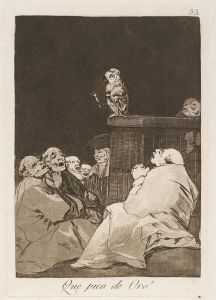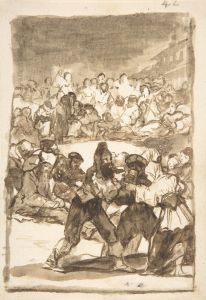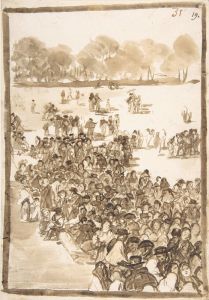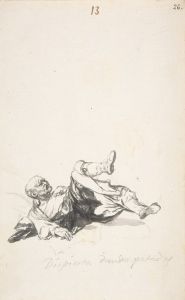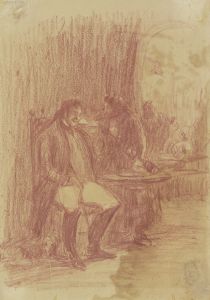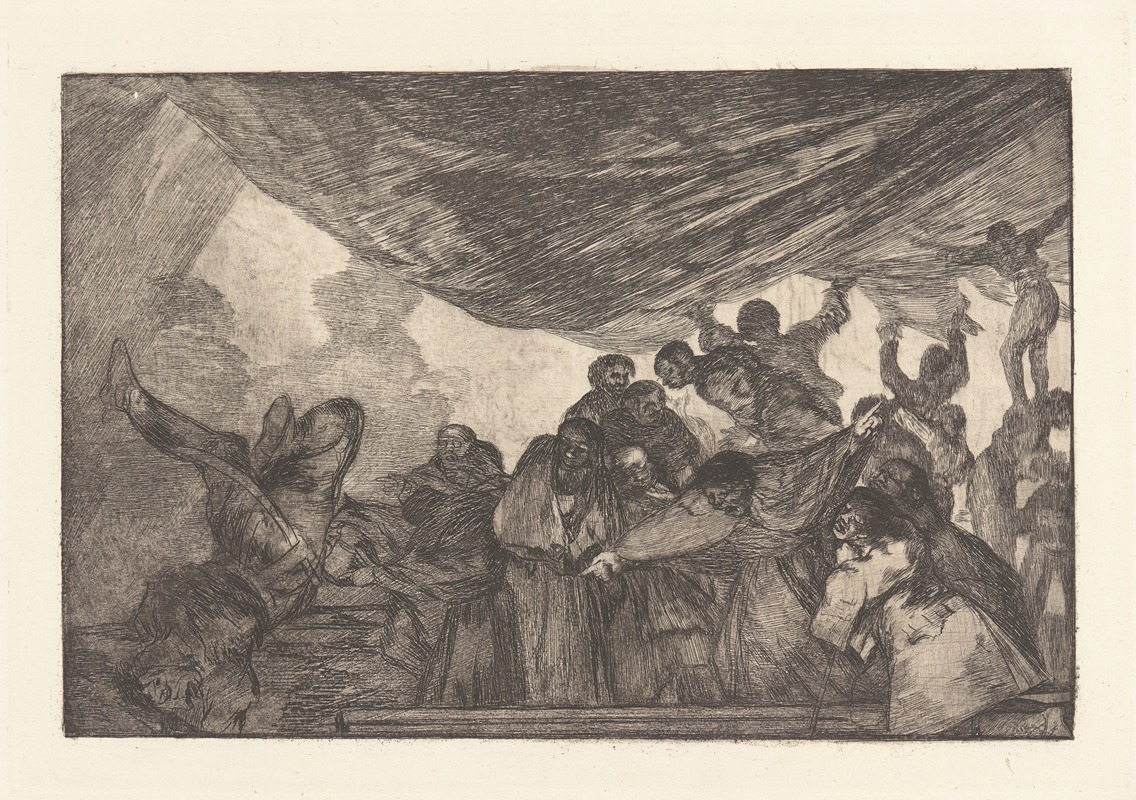
Without Commending Himself either to God or the Devil [Clear Folly]
A hand-painted replica of Francisco de Goya’s masterpiece Without Commending Himself either to God or the Devil [Clear Folly], meticulously crafted by professional artists to capture the true essence of the original. Each piece is created with museum-quality canvas and rare mineral pigments, carefully painted by experienced artists with delicate brushstrokes and rich, layered colors to perfectly recreate the texture of the original artwork. Unlike machine-printed reproductions, this hand-painted version brings the painting to life, infused with the artist’s emotions and skill in every stroke. Whether for personal collection or home decoration, it instantly elevates the artistic atmosphere of any space.
Francisco de Goya, a prominent Spanish painter and printmaker, created a series of works known as "Los Disparates" or "The Follies" during the later years of his life. Among these works is the piece titled "Without Commending Himself either to God or the Devil," also referred to as "Clear Folly" (Spanish: "Disparate Claro"). This series, including "Without Commending Himself either to God or the Devil," was produced between 1815 and 1823, a period marked by political turmoil and personal challenges for Goya.
Goya's "Los Disparates" series is characterized by its enigmatic and often dark imagery, reflecting the artist's preoccupation with the absurdities and contradictions of human nature. "Without Commending Himself either to God or the Devil" embodies these themes, presenting a scene that is open to interpretation but generally understood to explore the folly of human actions and beliefs.
The artwork depicts a figure suspended in mid-air, seemingly caught between opposing forces, symbolized by the absence of allegiance to either divine or demonic entities. This imagery can be interpreted as a commentary on the human condition, highlighting the struggle between moral and immoral choices, and the ambiguity of human existence. The figure's ambiguous position suggests a state of indecision or neutrality, a common theme in Goya's later works, where he often explored the complexities and contradictions inherent in human nature.
Goya's use of chiaroscuro, the contrast between light and dark, enhances the dramatic effect of the scene, drawing attention to the central figure and emphasizing the tension between the opposing forces. The composition is typical of Goya's mature style, which often employed stark contrasts and dynamic forms to convey emotional intensity and psychological depth.
The "Los Disparates" series, including "Without Commending Himself either to God or the Devil," was not published during Goya's lifetime. The reasons for this remain unclear, but it is speculated that the political climate of Spain at the time, along with the personal risks associated with the controversial themes depicted in the series, may have influenced Goya's decision to withhold them from public view. The series was eventually published posthumously in 1864, several decades after Goya's death, allowing the public to engage with these complex and thought-provoking works.
"Without Commending Himself either to God or the Devil" exemplifies Goya's ability to capture the intricacies of human emotion and the absurdities of societal norms. Through his masterful use of symbolism and technique, Goya invites viewers to reflect on the nature of human folly and the perpetual struggle between opposing moral forces. This work, like many others in the "Los Disparates" series, continues to captivate audiences with its timeless exploration of the human psyche.





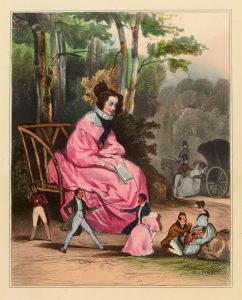
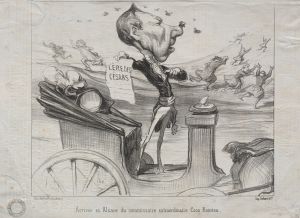
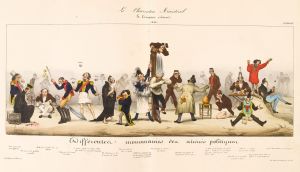
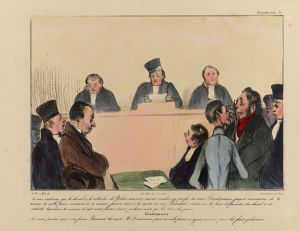
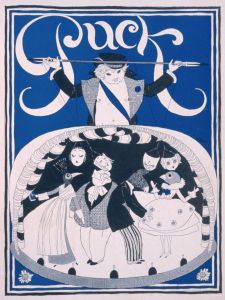
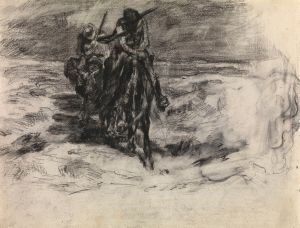
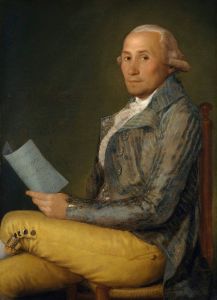
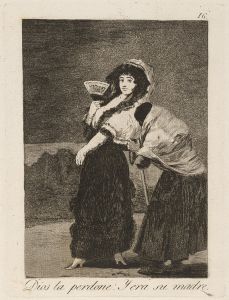
![He Who Does Not Like Thee Will Defame Thee in Jest [Loyalty]](/imgs/264614/s/francisco-de-goya-he-who-does-not-like-thee-will-defame-thee-in-jest-loyalty-4196b335.jpg)
